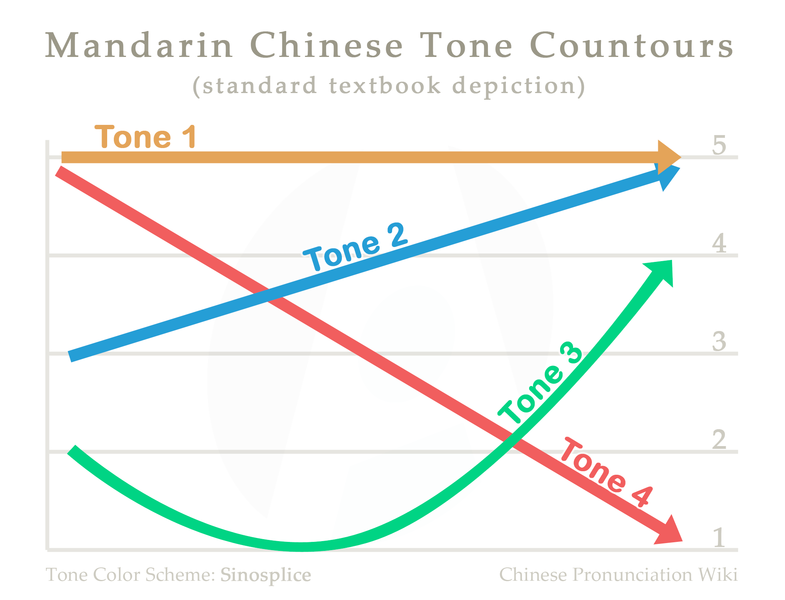Difference between revisions of "Four tones"
| Line 4: | Line 4: | ||
One of the first concepts you need to learn when tackling Mandarin Chinese is '''tones'''. You'll often hear that there are ''four main tones'', although there is also a "[[neutral tone]]," so you sometimes hear it said that there are five. | One of the first concepts you need to learn when tackling Mandarin Chinese is '''tones'''. You'll often hear that there are ''four main tones'', although there is also a "[[neutral tone]]," so you sometimes hear it said that there are five. | ||
| + | |||
| + | == Tone Diagram == | ||
| + | |||
| + | [[File:Tone-Contours Sinosplice.png|785px|thumb|center]] | ||
== First Tone == | == First Tone == | ||
Revision as of 02:49, 17 April 2015
| This article is a stub. Editors can help the Chinese Pronunciation Wiki by expanding it. |
-
Level
- Also known as: 四声 (sìshēng).
One of the first concepts you need to learn when tackling Mandarin Chinese is tones. You'll often hear that there are four main tones, although there is also a "neutral tone," so you sometimes hear it said that there are five.
Contents
Tone Diagram
First Tone
The first tone is high and flat.
Second Tone
The second tone is rising.
Third Tone
The third tone is low.
Fourth Tone
The fourth tone is falling.
Neutral Tone
This tone has its own page, so we won't cover it here. Just keep it short and light. Don't emphasize it.
Sources and further reading
Websites
- Wikipedia: Standard Chinese phonology: Tones
- Wikipedia: Mandarin Chinese: Tones
- Wikipedia: Four tones (Chinese)
- Sinosplice: Toward Better Tones in Natural Speech
- Hacking Chinese: Tones are more important than you think
- Sinosplice: Kaiser’s “Dude System” of Tones
Videos
- YouTube: [The Most Effective Way to Learn Mandarin Tones - Tone Pairs - Google Hangout with Yangyang] (00:00-08:15)


